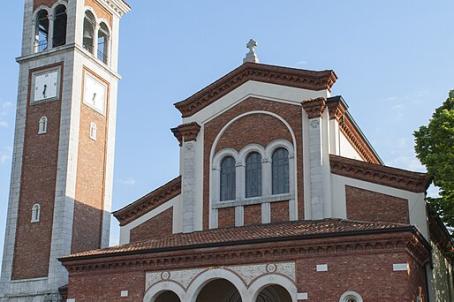Chiesa di Santa Chiara

The church of Santa Chiara is one of the oldest religious buildings in Udine. In the early Middle Ages, there was an oratory dedicated to St. John the Baptist on the site. A citizen of Udine then left a large sum of money and many possessions for the construction of the church of Santa Chiara, which was begun in 1294 and completed in 1303 with an adjoining convent completed in 1306.





